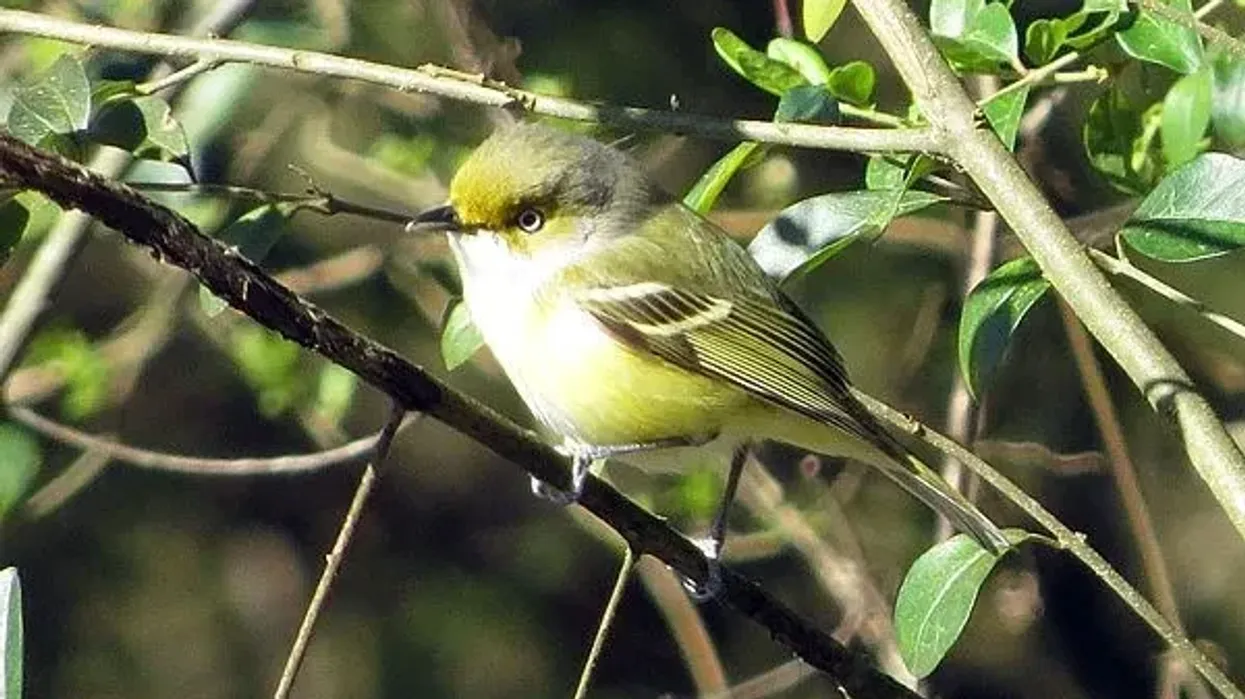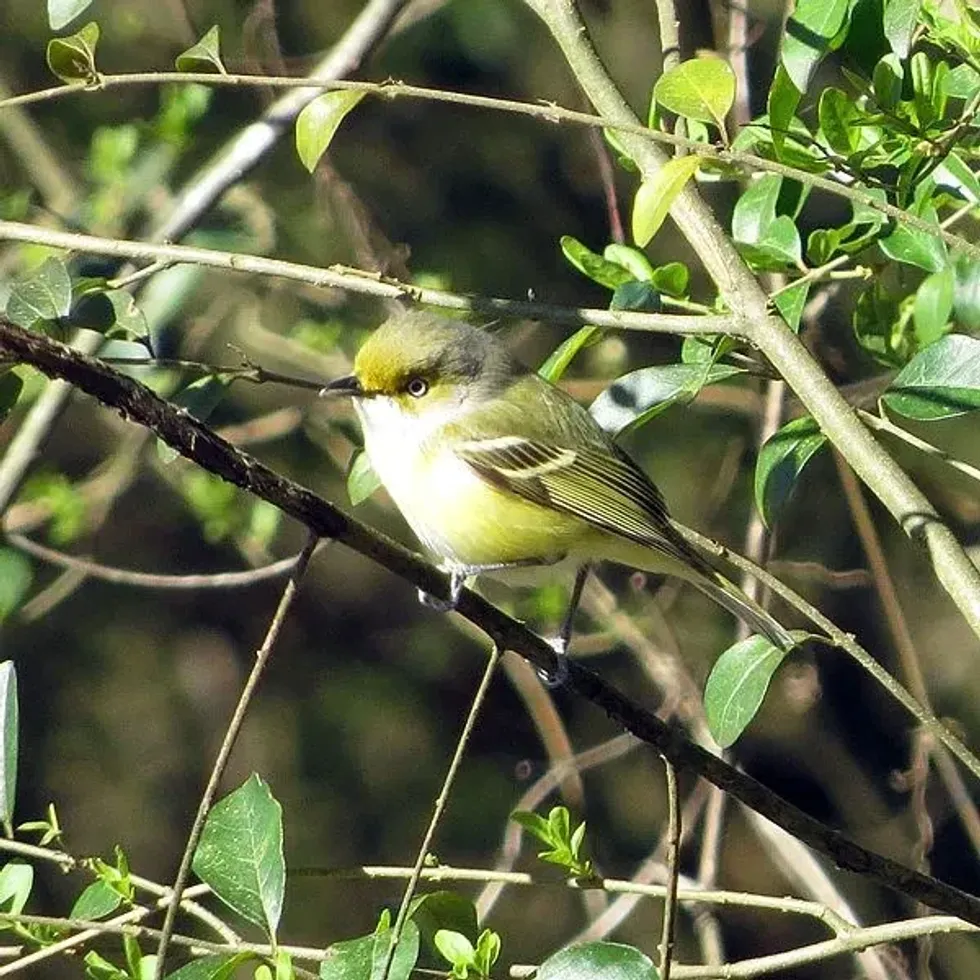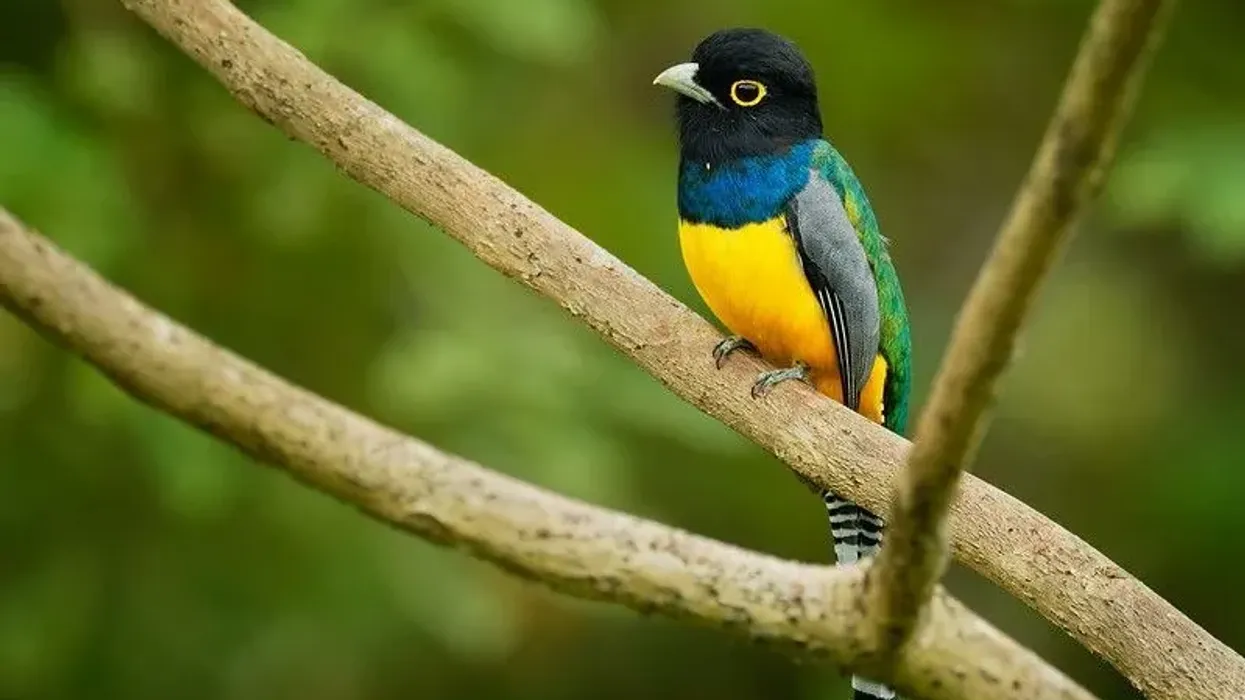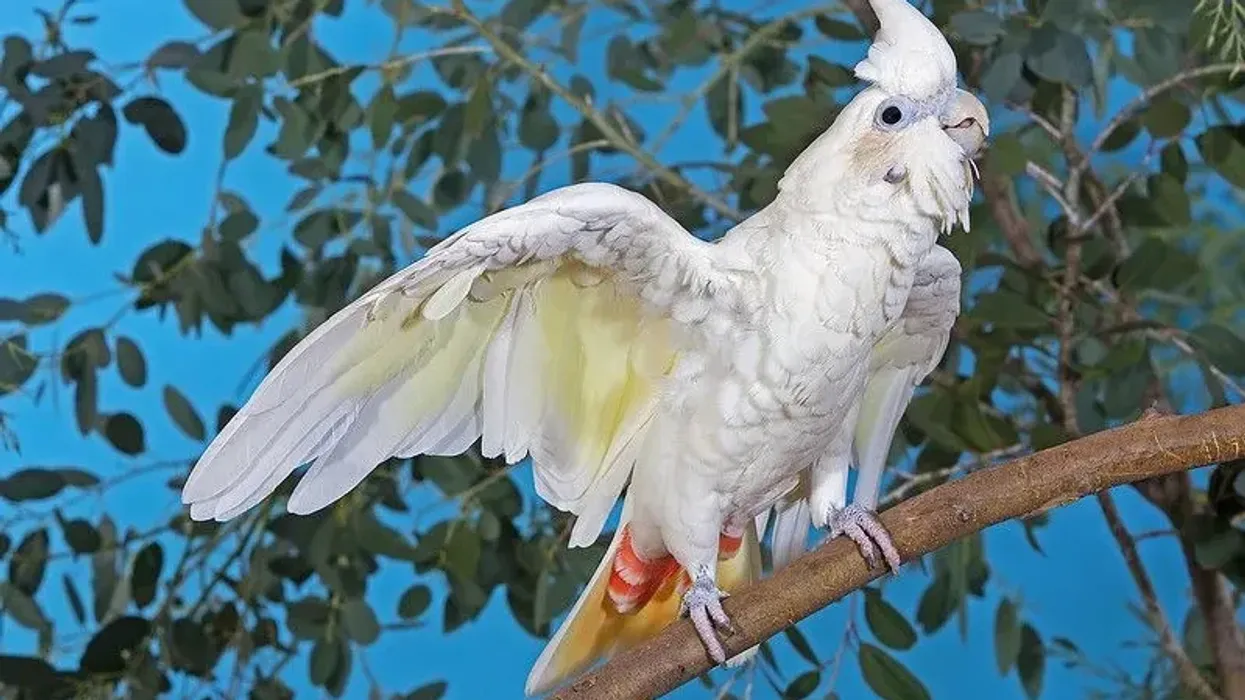The white-eyed vireo, Vireo griseus is a tiny bird that belongs to the family Vireonidae and order Passeriformes. There are around sixty species in this family. This bird is a North American bird that has white eyes. Its distribution range includes New Jersey, Missouri, Texas, Florida, the Bahamas, and Cuba.
This bird prefers bushes and shrubs, particularly in the abandoned field. It is a year-round resident in South America. Their greenish body coloration gives them a camouflage look when they perch on trees.
The mating season is from April to August. The vireo white-eyed bird is monogamous. Both sexes build the nest and incubate the eggs.
After hatching, they also feed the young for some days. The plumage of the bird is grey-yellow with white bellies and yellow sides. It has a black beak and legs.
The vireo white-eyed song is a short six to seven phrase, which it (usually male) used to attract its opposite in the mating season. It also uses a chick call to contact its mate. If you're interested in these birds, check out these warbling vireo facts and vermillion flycatcher facts for more.
White-Eyed Vireo Interesting Facts
What type of animal is a white-eyed vireo?
It is a tiny songbird species in order Passeriformes. It belongs to the family Vireonidae. There are nearly 36 vireo species in this family.
What class of animal does a white-eyed vireo belong to?
It belongs to the class Aves in phylum Chordata.
How many white-eyed vireos are there in the world?
The population size of these birds is about 21 million breeding birds.
Where does a white-eyed vireo live?
This bird lives in North and Central America. It is a Neotropical migrant which performs seasonal migrations several times each year.
In the breeding season, this bird usually lives in the southeastern United States and northeast Mexico. Its distribution ranges from southern Iowa to southern Michigan and Massachusetts. The bird shows movements to eastern Nebraska, Texas, and Oklahoma.
White-eyed vireo is a year-round inhabitant along the southeast seaside of the US from South Carolina to Texas and Mexico. Most North American birds spend their writer in Belize, Cuba, Mexico, Guatemala, the Bahamas, and the Cayman Islands.
What is a white-eyed vireo's habitat?
White-eyed vireo inhabits in brushy vegetation areas which must be located around a water source. It often builds its nest in the abandoned agricultural lands that have unplowed for twenty to fifty years so that there is enough shrubby vegetation.
The bird is often found in thickets alongside marshes and overgrown pastures. It is a common species in the Central Everglades.
Who do white-eyed vireos live with?
They usually live alone but a flock of about 2-3 individuals can be seen.
How long does a white-eyed vireo live?
The life years of a white-eyed vireo (Vireo griseus) are unknown. However, the surviving rate is between 15-50%, which depends on the environmental conditions of the habitat.
How do they reproduce?
White-eyed vireos are monogamous birds. A female visits the territories of males and ultimately opts for a suitable mate. In the white-eyed vireos, there are no special courtship displays.
However, males and females court each other for numerous days. In this time, they forage together. But they do not mate for life.
In fact, they mate for only one season. The breeding season ranges from April to August. After pairing up, both sexes initiate searching for a nesting site.
It is normally up to 1 m (3 ft) from the surface. Female vireo selects the nesting site which is a comfortable, forked branch on which both male and female build a cup-shaped nest.
The nest is made of grass, twigs, spider silk, and bark strips. It takes about 3-5 days to construct the nest completely. The eggs of white-eyed vireo species are white with dark spots.
Both parents perform incubation duties for about 13-15 days. After hatching, the young leave the nest within 9-11 days. The young depend on their parents for food.
Both parents take care of the young for more than 23 days after which they fledge from the nest. Young are altricial or naked with closed eyes. One unique characteristic in the white-eyed vireos is that the parents develop brood patches on their bellies that provide the most warmth to eggs.
What is their conservation status?
According to the International Union for Conservation of Nature and Natural Resources (IUCN), the conservation status of white-eyed vireos is of Least Concern. They have a large range of geographical area and population size.
These birds are currently stable but they may get threatened due to habitat destruction by human activities in the future. The most preferable habitat for white-eyed vireos is usually targeted by humans for development.
White-Eyed Vireo Fun Facts
What do white-eyed vireos look like?
White-eyed vireos are tiny birds having a length of about 5 in (12.7 cm), and a wingspan of around 7.4 in (19 cm). Their dorsal side is dark olive and the wings and tails are black. Each wing has two white wing bars with yellow or white margins on the primaries.
White-eyed vireos possess gray nape and olive head. The most distinct feature of these birds is illuminating yellow spectacles, including lores and the area around the eyes. Another important characteristic is the white irises in adults.
These birds have white throats and bellies. They have dull yellow sides.
The legs and beaks of the birds are deep blacks. Unlike adults, juvenile white-eyed vireo birds have dark irises till the age of two. These young have white spectacles instead of yellow and a pale gray head.
Their body plumage is also paler than adults. Both sexes in white-eyed vireos look similar. It is not known how many days or months it takes to develop their white eyes.

How cute are they?
White-eyed vireos are cute animals. People love to watch them because of their beautiful plumage.
How do they communicate?
They communicate through visualizations and vocalizations. The song is very fluctuating and consists of about six to seven-note phrases. It starts and ends with an acute chick. Visual communication includes various body postures and behaviors.
Worried individuals show overstretched neck movements or wing flicks. These movements are displayed in front of intruders. Sometimes, they also bite at a perch or their own feet. If these displays fail in threatening the invader, then do an aerial attack.
How big is a white-eyed vireo?
The length of the vireo bird is about 5 in (12.7 cm), which is similar to the savannah sparrow.
How fast can a white-eyed vireo fly?
The flight of Vireo griseus is fast but the exact speed is unknown.
How much does a white-eyed vireo weigh?
The standard weight of this bird is about 0.40 oz (11.5 g).
What are the male and female names of the species?
Male and female vireos do not have specific names.
What would you call a baby white-eyed vireo?
It is generally known as a chick, young, or offspring.
What do they eat?
In the breeding season, the diet mostly consists of insects but in the nonbreeding season, they generally eat fruits, such as berries along with insects. They prefer to eat caterpillars but also feed on beetles, leafhoppers, ants, bees, egg cases, mayflies, stink bugs, and grasshoppers.
Are they dangerous?
No, they are non-dangerous birds. In fact, they are lovable and cute.
Would they make a good pet?
People keep this species of vireos as pets because of their adorable appearance. They are available at pet shops but you can also attract them with some tricks in the wild.
Did you know...
The white-eyed vireo is one of the two bird species with white eyes found in the United States.
The white-eyed vireo's call
The white-eyed vireo call is sharp and described as 'quick-with-the-rain-check'. The song consists of about six to seven notes in which the first and last notes are diminutive and sharp, whereas the central notes are a quick trill.
In the breeding season, males sing this song to attract females. Young birds learn their father's song at the very beginning of their life and also try to mimic the song after they leave the nest.
They also modify their song by joining some elements from the neighbor's song. When the birds see a predator they produce a harsh call to scare them.
A breeding pair gives each other a small 'pik' call to contact each other. If these birds are captured or handled by human beings, they emit a rough squeal to alert their mate or to frighten humans.
Naming the white-eyed vireo
Vireo in the scientific name derives from a tiny green migratory bird, such as the European greenfinch or Eurasian golden oriole. The species name griseus comes from a Latin word that means gray. It is pronounced as white-eye-d-vii-reo.
Here at Kidadl, we have carefully created lots of interesting family-friendly animal facts for everyone to discover! For more relatable content, check out these gnatcatcher facts and common kingfisher facts.
You can even occupy yourself at home by coloring in one of our free printable White-Eyed Vireo pages.










